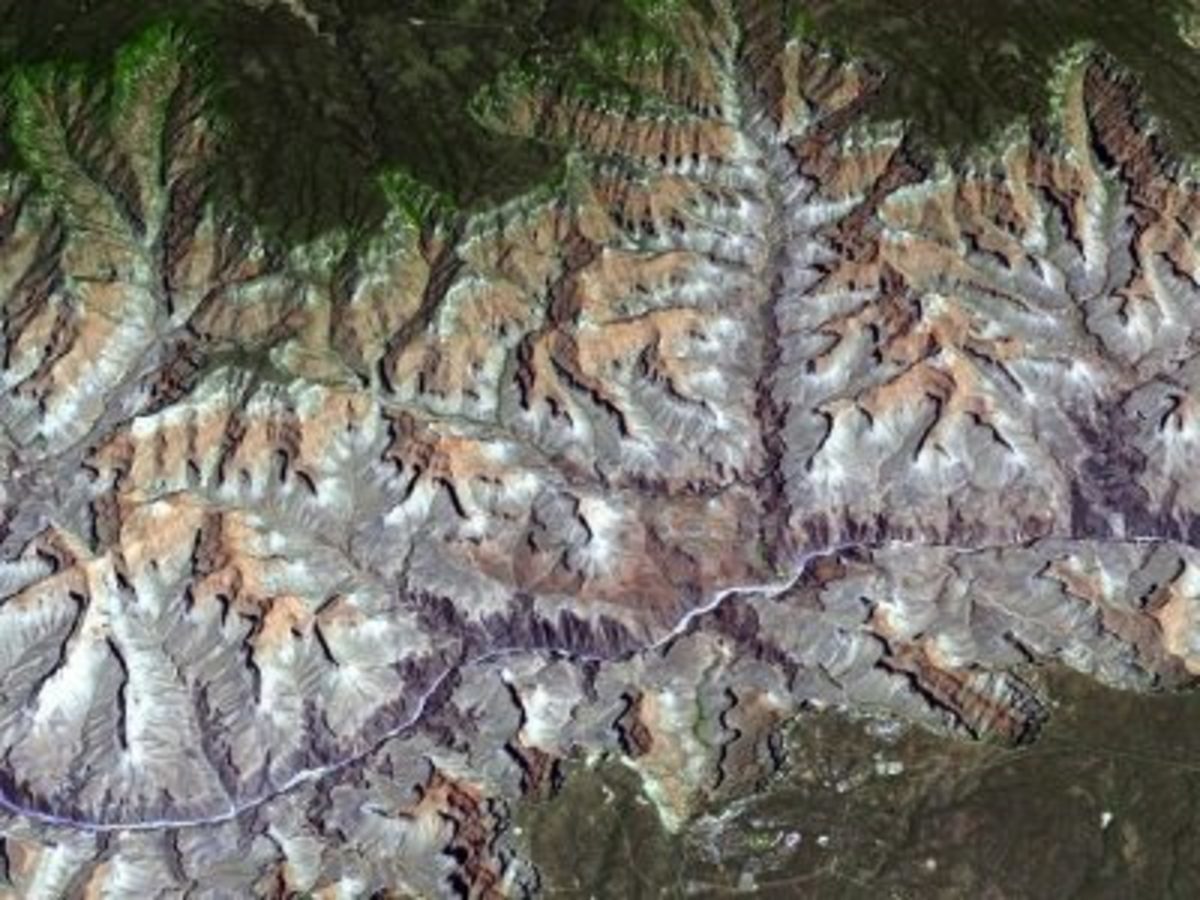PAOC Spotlights
Stream Network Geometry Correlates with Climate

A "big data" analysis of nearly 1 million river junctions in the contiguous United States shows that branching angles in dendritic drainages vary systematically between humid and arid regions.
Although dendritic river networks, whose branches join in treelike fashion to form increasingly larger streams, are found all over the world, the processes that shape them are still poorly understood. To explore whether climate influences the geometry of dendritic stream networks, Seybold et al. analyzed nearly 1 million digitally mapped river junctions in different climatic regimes across the contiguous United States.
Using the NHDPlus Version 2 database, which combines the best features of the National Hydrography Dataset (NHD), the National Elevation Dataset (NED), and the Watershed Boundary Dataset (WBD) and has a resolution of about 30 meters, the team calculated the angle between the average orientations of each stream and its tributary. They then averaged these junction angles across large hydrologic basins.
The results show that the branching angles vary systematically with climate, with a clear trend toward more acute angles (averaging 45°) in the most arid regions and wider angles (averaging about 72°) in more humid landscapes. This correlation, the researchers report, is found in all sizes of streams and is stronger than the relationship between branching angles and other factors, including topographic gradient and stream concavity, that have previously been proposed as major controls on stream network geometry.
The authors attribute this correlation between climate and branching angles to the relative importance of the underlying channelization processes. The wider average branching angles in humid regions, they argue, result from the greater importance of diffusive processes, such as groundwater flow, in the growth of stream networks. By contrast, the narrower branching angles in arid landscapes are shaped to a greater degree by surface and near-surface flows, which generally occur parallel to the downslope direction and thus create narrower junctions.
In addition to providing insight into modern geomorphic processes, these findings may offer a means of identifying channelization processes and reconstructing earlier climates in relict landscapes, such as those found on Titan and Mars. (Geophysical Research Letters, https://doi.org/10.1002/2016GL072089, 2017)
Citation: Cook, T. (2017), Stream network geometry correlates with climate, Eos, 98, https://doi.org/10.1029/2017EO070679. Published on 06 April 2017.
© 2017. The authors. CC BY-NC-ND 3.0